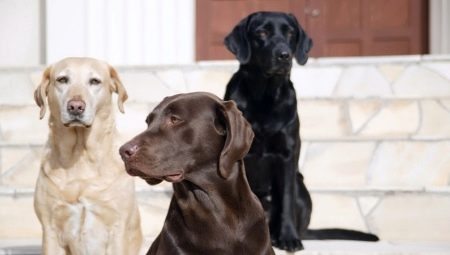Dogs can amaze with their colors, thereby winning the hearts of fans. However, everyone should know that the colors of dogs are classified into groups, each of which differs in features.
Genetics
Breeders have long studied the process according to which the formation of color and pattern occurs on the coat of the animal. Coloring depends on genes, including those responsible for the pigment and structure of the hair. If mixing occurs, the genes begin to form the color of the dog.
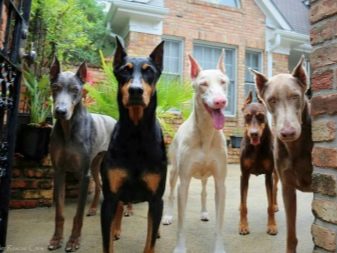
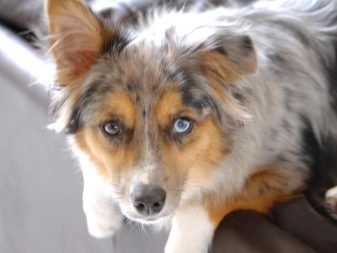
There are several staining genes.
- C. This is a key component in the entire gene chain. Due to it, the body is able to synthesize all color options. The peculiarity of this component is that it does not have color. If it is not in the body, the puppy may be born with an albino-colored coat. However, even if there is no such gene, the nose mirror and iris can still get pigmentation.
- A. Responsible for the distribution of coat color. With its help, a solid color or sable can be obtained.
- C. This is a black gene that dyes hair in a dark tone. Such a breed as a Giant Schnauzer, Newfoundland has it necessarily. Other types of rocks may have interspersed such a gene, which manifests itself as tanning or zoning colors.
- D. It is responsible for the saturation of the black color. If the gene is weakened, the coat will be lighter, as a result of which the animal will have a blue pigment. This can affect the dog’s vitality.If the baby of a toy terrier or Doberman is born with a recessive D gene, he will receive blue pigment and in most cases will not live to old age. If the gene dominates, the coat turns dark and provokes the correct form of melanocytes (pigment cells).
- E. He harmoniously disposes of pigment of black, brown and yellow colors. With it, you can get solid colors or tricolor.
- G. It is called gray-haired, as it helps lighten the coat when the animal begins to age. Often the dog can be born blue, evenly changing the color of the coat.
- M. This is a marble color. He gives not only the famous harlequin drawing. In a homozygous form, a gene can lead to congenital malformations of the fetus. Often a gene can be defined as a modified color, as it also becomes lighter as it ages.
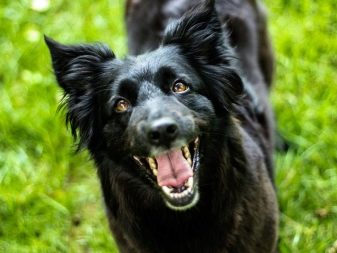
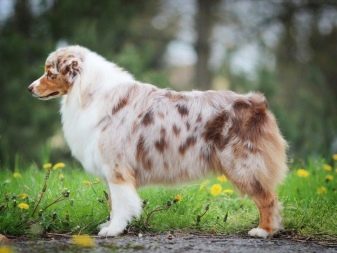
Color groups
The coloring of the animal is divided into two large categories. In the first, monochrome color variations are located. The second is divided into two subcategories: two-tone and multi-color. Such animals can be painted in a color consisting of two or more pigments.
Solid
Solid color is characterized by the presence of only one color or its complete absence. Due to eumelanin, black, chocolate colors with varying saturation are obtained. In the clarified form, such a color is blue and beige.
Due to pheomelanin, a red, deer color is obtained. The clarified form of such a pigment gives sand wool, which can vary from white to cream color.
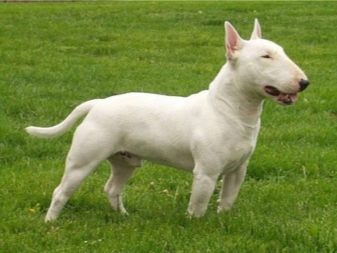

Mixed
This color appears due to the mixing of two colors and the absence of white. Depending on the presence of eumelanin with pheomelanin, there are 5 main types of colors:
- redhead equipped with a black mask;
- redhead with blackout;
- brindle;
- black with a red tan;
- redhead with black-and-white.
Variants of the main varieties of color are characterized by lightening and the location of pigmented hairs along the body of the animal. The mask can be combined with any of four colors.

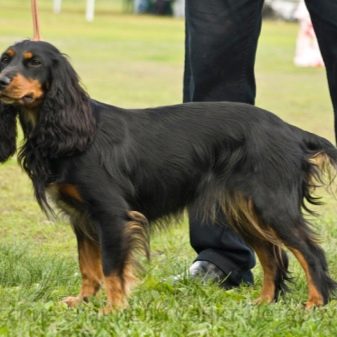
The red color with dimming appears if there are two pigments in the wool, forming black (brown) and red pigment (it is called zonal). Due to this, the pigmentation zone can be distributed in different ways. There is a multicolored mass of options:
- if there is an alternation of pigment in the hairs, the color will be wolf;
- if the black pigment is located at the end of the hairs, the dog receives a sable color;
- when dark zones are formed in the form of vertical hair on the body of the animal, a tiger color is obtained;
- a black pigment located on the muzzle, the front of the head (which reaches the ears), is called a mask;
- black hair, located on the back and falling to the lateral and femoral zones, is called black color.
The tan marks are called red spots with clear edges. They can be located in certain areas on the body of the animal. The brightened version will be accompanied by a change in shades.
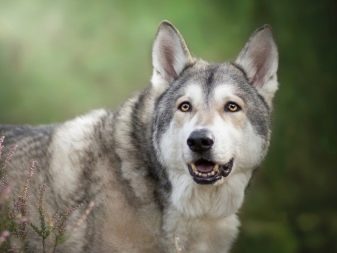
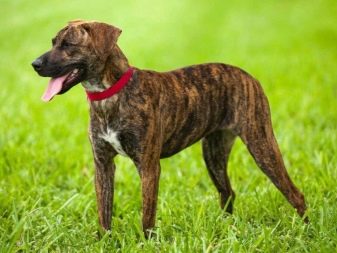
Modified
Solid or mixed color may change due to age-related changes. It manifests itself in lightening, spotting and piebut. The clarified coloring is accepted in different breeds. This is not related to the aging process and is peculiar to the Beglinton Terrier. A puppy of this breed is born colored and eventually blooms. A similar modification can be observed paired with any base color. Spotted, mottled colors are dark spots that vary in shape. They are located on a light or gray background. In this category is a marble color.
White spots are possible (characterized by the complete absence of pigment in certain areas of the animal’s body), the frequency of which can be small, moderate and widespread.The formation of such spots depends on a specific process, according to which the first points will appear in the primary places of depigmentation. The longest time color is in the pigment center.
Sometimes it happens that white spots are located almost over the entire surface of the body and only the tips of the ears are subject to coloring.
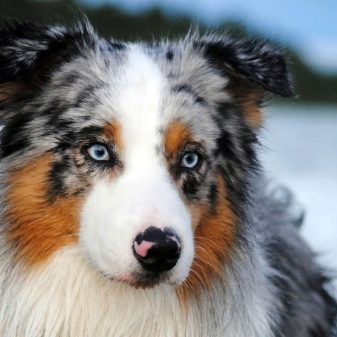
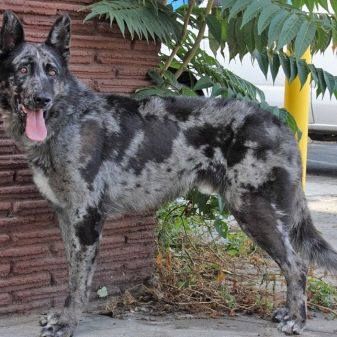
Varieties
In total, there are not many source pigments. Agouti is a series of alleles that is responsible for determining the primary color of an animal. In dogs, this color is called zonal gray. An allele is a different form of the same gene:
- the initial agouti is a wolf gray color;
- solid black;
- shabrack;
- dominant yellow or red.
Agouti is characteristic of wild dogs and many breeds that are characterized by a zonal gray color. These include huskies, Norwegian Elkhund, northern sled dogs. Due to mutations of a genetic nature, two dominant agouti appeared - solid black and red, along with two recessive agouti - cheprak and black with tans. All other colors are the result of a mutation.

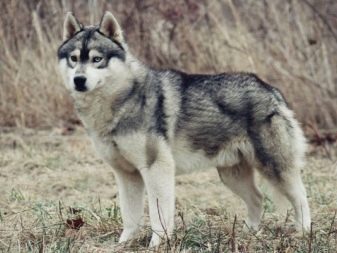
Single color
There are dogs of different colors.
- The black. They may have a small white spot in the chest area. It is so small that it can be only a few hairs in size. An extreme degree of shabraka or tiger coloring is allowed. The animal must possess a black nose, lips and eyes of a dark brown color.
- Brown. These include liver, coffee (chocolate) colors. They are considered quite complex when it comes to breeding. This color manifests itself if the dog does not have a black gene. This affects not only the hair, but also the eyes and nose. Among the shortcomings of brown color can be attributed to the burnout of the coat under the influence of sunlight.
- Red. These include rich red shades and light red. The main component of the coloring is red. The most fashionable color is mahogany, which is distinguished by the brightness and richness of red. The Irish Setter is an example of a similar color. Dog breeders consider the coloring independent, but in the pedigree it is written as red. The second name of the red color is red. The name is not entirely correct, since the red color combines deer, red. And red, unlike the deer color, does not have transitions and brightened areas.
- Apricot. This is an intermediate color, located between red and cream. It is rarely seen in official documentation, although some dog breeds described in the pedigree as cream and red can be described as apricot. The difference from red is with a certain degree of whiteness and the presence of inclusions in the form of wool of a light shade.
- Blue. This may include silver or gray color. The zoning-gray color along with the clarified tiger may also look blue if a combination of cch genes is present. The color has a mousey, ashy light or dark, wet asphalt, blue tone.
- White. True white dogs have this color at birth. The nose or lips may be black or brown. If the animal is a carrier of the cch gene, at birth it is characterized by a red or fawn color. With age, they become lighter.
- Pale yellow. This is a lightened red color. It can also have different shades. The area of the chest, limbs and lower part of the tail is almost white, and the mask may be dark or black. Depending on the B allele, the color of the nose may vary in fawn. There is pink, brown or black pigment.
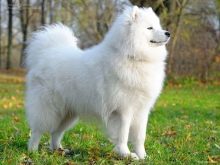

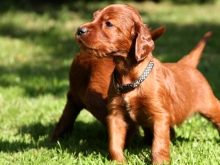
Two-tone
In two-tone colors, the following variations are provided.
Black-eyed
The main pigment is red. Different shades of this color are allowed: bright red, light fawn.Also, the main tone is a black, gray shabrack, which will be located on the upper body of the animal: head, nose, forehead, neck, ears, back, shoulders, hips and upper half of the tail. The lower part of the body - the lower jaw, the lower part of the head, cheeks, throat, chest, abdomen and lower tail can have a light pigment.
Shabrack can vary in size and tonality. Its origin is from the neck, and the head may be light. There are individuals in which the cap covers only the shoulders and hips from above, or descends to the limbs. Cheprak can have a gray, black, brown color. There are clear outlines of light or dark hair, or the color blends evenly with the overall tone. Completely shabrack manifests itself after the puppy hair is replaced.
As a rule, babies are born black with a tan. When the animal grows up, the coat on the legs, sides and head acquires a light shade.

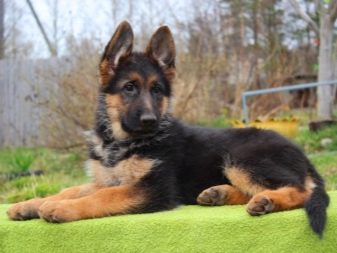
Tan
The main pigment is able to act black, brown, gray. The tan marks will be bright. When compared with the main color, it acts as marks that have a constant pattern.
The tan sharply borders on the main color. It is placed by two spots on the body: on the eyebrows, muzzle (excluding the back of the nose), chest (manifests itself in the form of two triangle spots, the tops of which look at each other), cheekbones and throat. The tan can be located on the forelimbs and hind limbs, covering only the front. The inner sides of all paws are also equipped with a tan, which creates spots around the anus and the lower part of the tail.
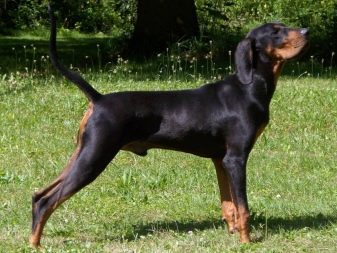

Murugy
Muruy is a dark red color, which can vary to a mahogany tone. The ends of the coat have black or dark pigment. Deer color has a second name - walnut. It can vary from golden to sand. Redness is not inherent in such a color.
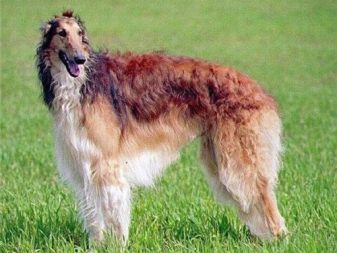
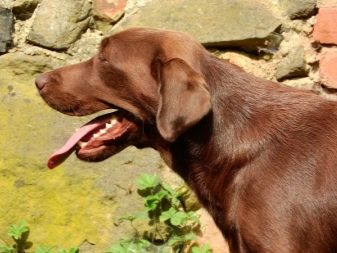
Sable
The coat has a red color, the tips of which are painted black.
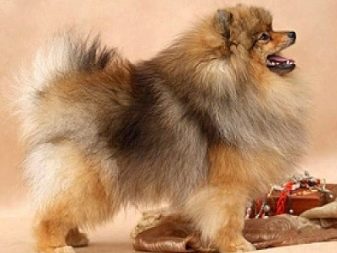
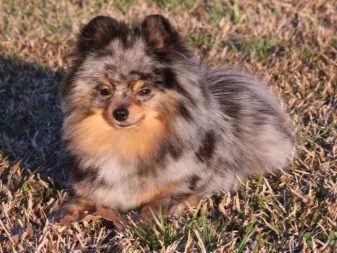
Tricolor
- Roan. The peculiarity of this color lies in the fact that between certain colored hairs white hairs are located. Due to this, a silver color is formed with weakness.
- Marble dogs are called Harlequin. The base is white, gray-blue or light. Spots with torn edges of black or brown-gray are measuredly scattered on it.
- Piebald. This is a two-color color, which is created by large white spots located on a red background. The background may also have another pigment.
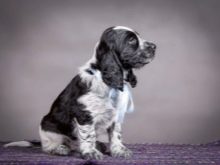
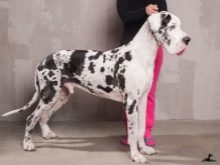

Fancy shades
There are rare colors that are inherent in some breeds. Blenheim is a stained chestnut stain. They are based on pearl white. Coloring is found only in the Cavalier King Charles Spaniel. A white rhombus should be present on the parietal part, a chestnut stain will be present in the central part.
Merle is an uneven coloring of the coat. Manifested in dark or light tones of the same color. This color is found in pit bulls.
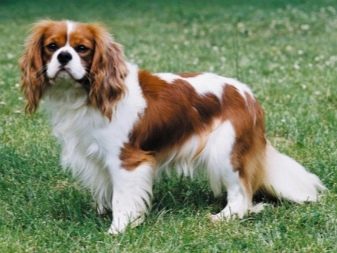

Does coat color change over time?
You can understand in advance whether the dog will change its color. Breeders use special methods by which they determine the possible overflow. If a puppy is born brown, its color may become darker over time. This fact can be determined using the color of the nose: if the mirror of the nose of a light brown individual is dark, the hair will also become darker as it grows older.
Black dogs can acquire golden pigment. The tone of the undercoat can help predict the event.
To determine, you can spread the hairs: the base of the coat will be brown.
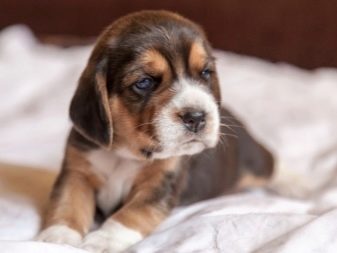

Most often, you may encounter the overflow of the following dog breeds.
- Spitz Recoloration is peculiar to individuals whose ancestors were carriers of non-standard colors.
- Yorkshire Terrier. These animals will change their color up to 12 months. This characteristic is spelled out in the breed standard.
- Rottweiler. In these individuals, the tan can acquire brightness, but there are also cases of manifestation of black impregnation.
- German Shepherd. Often you can encounter a situation where three-month-old babies born to tanning become black-eyed.
- Kerry Blue Terrier. Representatives of this breed at birth have a black color. After some time, the wool acquires a silver pigment.
- Dalmatian. Most puppies are born with white hair. On the 14th day of their life, spots appear. The process of manifestation of black spots lasts up to two months.
- Bobtail. Young individuals often have a monochrome color. After some time, the black marks turn blue.
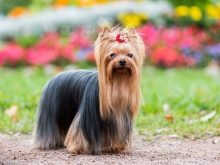

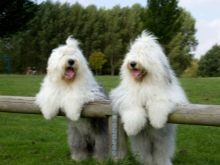
It often happens that a pigment change occurs unexpectedly. To eliminate the loss of the breed standard, which is provided for in the breeding issue, many dog breeders acquire adult dogs.
In the next video you will find an interesting lecture on the topic of dog color genetics from Pedigree.
